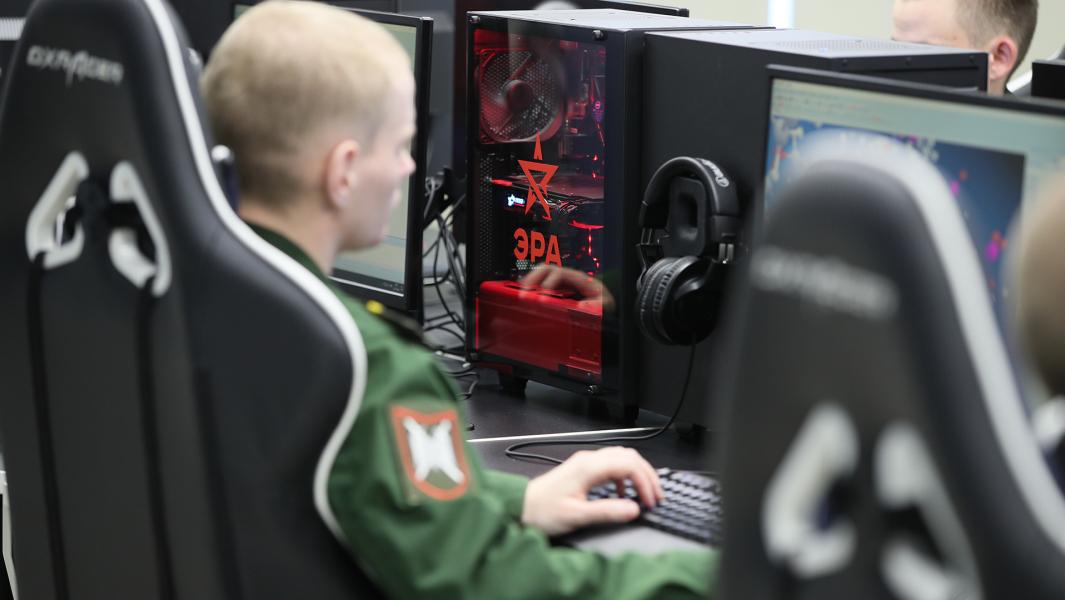Russian military will create their own private Internet

Source: Izvestia
Today it became known that the armed forces of the Russian Federation have begun work on creating a sovereign network segment for themselves. This is a closed digital information exchange system, which also has its own name - the multiservice transport network of communications (MTCC). The first phase of work should be completed by the end of 2019, the final readiness stage is expected in two years, as reported by Izvestia.
Moreover, the military will have a search service. In order for everything to work regardless of external factors, a fiber-optic cable will be laid across the Arctic. Experts say that the experience of creating the MTSS will be useful in the formation of a national network.
According to the authors of the project, MTSS will ensure the electronic security of the country At the same time, there will be no traffic exchange points that connect it to the World Wide Web. All important information will be stored on the servers of the Ministry of Defense. Moreover, the developers expect MTSS to provide an opportunity to organize high-speed transmission of any amount of information throughout the country using Big Data technology.
')
Perhaps the military information exchange network in the future will become a segment of the sovereign Russian Internet. MTCC can be used, for example, for a procurement system and product quality control.
On the other hand, now in Russia there is already a self-sufficient civil communication infrastructure, if necessary, it is quite possible to close it on itself. It is equally important to provide reliable communications for the whole country. Currently, deputies, along with representatives of the Internet industry, are deciding how best to organize it. The fact is that the law on “sovereign Internet” will be extended to civilian infrastructure, so that in the event of serious geopolitical problems, it would be possible to switch the system to autonomous operation.
Currently, the military are using a closed data segment to exchange information. Until recently, this segment was associated with certain sections of the network of civilian operators. In the future, it is planned to complete the integration of FMET in MTSC, the latter being developed on the basis of the latest domestic achievements in the field of digital data transmission systems.
The network will have its own fiber-optic networks, which will be divided into zonal trunk channels. The Ministry of Defense has already begun preparations for laying a transarctic line for the needs of the Navy and coastal forces. The fiber-optic cable will “sew” the Arctic and the Far East from Severomorsk to Vladivostok.
Well, for a safe and fast data transfer, a unified management system will be created, which will be equipped with modern hardware and software. All of this will be called the Unified Information Security Circuit.
In order to ensure truly safe operation, MTSS provides for an electronic logbook of the actions of officials and the identification of users. If necessary, it will be possible to trace all the actions of a particular soldier in the network. The officers who serve the loop will monitor traffic and network operation in real time, and if necessary, they will redirect information flows if one of the network segments is overloaded.
Another module is the alarm logging module. It will be used to distribute communication recovery tasks. Moreover, on the basis of the accumulated data archive, it is planned to develop a program for predicting emergency situations, which ensures the reliability of the MTCC.
As mentioned above, all data will be stored only on the servers of the Ministry of Defense. Information will be duplicated, it will help to save it in case of damage to one of the files. Thus, the army will receive a private cloud storage for official and secret information. According to sources, the Ministry of Defense ordered the creation of geographically distributed data processing centers.
As for the search engine, it will be semantic, so that users will be able to request data for keywords and phrases. Information on the troops and aircraft will be added to the MTSS databases, and an interactive map with the brigades and divisions of the Russian army on it will be added. The map will allow commanders to assess the situation while in the National Center for Defense Management.
In combat conditions, a closed system is also useful. For example, the Russian complex of reconnaissance, control and communications "Strelets" currently allows you to display on the tablet map of the intended area of warfare. It can be complemented by scouts who send data through secure channels. In addition, the network allows in a secure mode to provide logistics.
Minute of care from UFO
This material could cause contradictory feelings, so before writing a comment, refresh something important in your memory:How to write a comment and survive
- Do not write abusive comments, do not go to the person.
- Refrain from using obscene language and toxic behavior (even in a veiled form).
- To report comments that violate the rules of the site, use the "Report" button (if available) or a feedback form .
What to do if: minus karma | blocked account
→ Code of authors Habra and habraetiket
→ Full site rules
Source: https://habr.com/ru/post/443452/
All Articles
